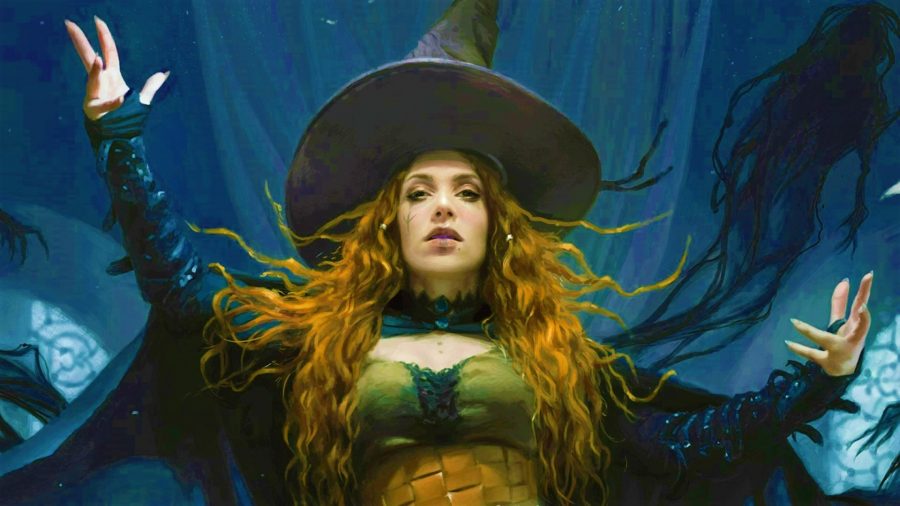If we told you Minor Illusion 5e was one of the best D&D cantrips out there, it wouldn’t be a trick. All cantrips are appealing for their unlimited casting potential, but Minor Illusion offers so many roleplaying options that it’s hard not to recommend. Opening doors to clever traps, narrow escapes, and lighthearted pranks, this is a cantrip that rewards creativity.
Of course, creativity isn’t without complications. An effective spellcaster must understand the limitations of Minor Illusion 5e to make the most of it. Otherwise, all you’re left with is an unconvincing shadow of an object – and an irate NPC who doesn’t take kindly to being tricked.
Here’s a Minor Illusion guide that spells out everything you need to know – no tricks, no catches, just key details. We’ll take you through everything you need to cast the cantrip, which classes get first dibs on learning it, and the pros and cons to consider when putting it to the test in your campaign. Before long, you’ll be up to your eyes in imaginary objects.
Here’s everything you need to know about the Minor Illusion 5e cantrip:
- Minor Illusion 5e features
- How to cast Minor Illusion 5e
- Who can cast Minor Illusion 5e
- Pros and cons of Minor Illusion 5e

Minor Illusion 5e features
These are the key features of Minor Illusion 5e:
| Level | Cantrip |
| Casting time | One action |
| Duration | One minute |
| Range / Area | 30ft |
| Attack / Save | None |
| School | Illusion |

How to cast Minor Illusion 5e
You’ll need a bit of fleece and a grand somatic gesture to fulfil the component requirements of Magic Illusion 5e. When this is ready, you can create a sound or image of an object within 30 feet of you.
You have quite a lot of freedom regarding the illusion you cast. For example, you can create any sound you want, with a volume between a whisper and a scream, and it can be continuous or intermittent.
Warlock wonder: A guide to DnD Eldritch Blast 5e
However, there are limitations – particularly if you’re creating an illusory image. These can still be whatever you like, but they must be no larger than a five-foot cube. The image also can’t create any additional sensory effects like smell, sound, or light.
And that’s all there is to it! Just hope that no one tries to touch your shiny new Minor Illusion – or rolls a successful Investigation check against your spell save difficulty class, for that matter. Then things might get a bit awkward.

Who can cast Minor Illusion 5e
A Bard, Sorcerer, Warlock, or Wizard can learn Minor Illusion. Each of these classes knows cantrips from level one, so you can crack on with the illusions right out the gate.
Other characters can still learn Minor Illusion thanks to certain subclasses, but they’ll have to do so at a later level. Clerics who choose the Arcana Domain can learn Wizard cantrips like Minor Illusion from first level, and Arcane Trickster Rogues and Eldritch Knight Fighters can learn them cantrips from third level.
See right through: Check out our DnD Invisibility 5e spell guide
Way of Shadow Monks can also learn Minor Illusion at third level thanks to their Shadow Arts trait. Another third-level learner is the Blood Hunter, who can choose Warlock cantrips if they join the Order of the Profane Soul.
Some races can also learn Minor Illusion, so other classes don’t need to feel left out. A Mark of the Shadow Elf knows the cantrip, as does the Forest Gnome and the Glasya Tiefling.

Pros and cons of Minor Illusion 5e
It’s hard to overstate how useful an illusion can be in D&D. You can create false tracks to send pursuers down the wrong path, noises to distract an enemy in combat, or even a false bit of floor to conceal a well-placed pit trap.
This is also the perfect cantrip for pranksters, so your roleplaying options include illusions that are fun as well as useful. If your cheeky Bard wants to trick a hapless NPC into fleeing from a pretend snake, those options are on the table. This is a cantrip, so you haven’t even wasted a spell slot to do so.
That being said, you don’t necessarily have infinite use of Minor Illusion, as it requires a material component to cast. Sure, you might have a large fleece coat you’re snipping into oblivion to fuel your illusion addiction, but otherwise, Minor Illusion is slightly less of a freebie than some other cantrips.
Maximising the potential of Minor Illusion requires a lot of creativity – which can be both a good and a bad thing. It can bring a lot of joy to the table when a player finds a particularly clever use of the cantrip, but it might be easy for players to forget what Minor Illusion can’t do. Minor Illusion can’t move, be touched, or create other sensory experiences. Players who create the illusion of fire can’t also create the sound, smell, light, and sensation of being burned – so it’s not going to be very convincing.
It’s also worth remembering Minor Illusion only lasts for a minute – which, outside of combat, really isn’t very long at all. Your best bet is to create an illusion in a situation where the person you plan to dupe doesn’t have time to consider what they’re seeing or hearing. And, of course, beware trying to trick those likely to have high Intelligence stats. You can’t fail to cast the spell, but you can fail to sell it.
